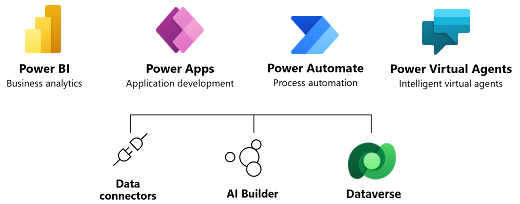
The Power Platform is perhaps our favourite technology stack from Microsoft. It is the engine for the majority of automation, integration and efficiencies within the Microsoft 365 ecosystem. Simple functionality across the Power Platform is included with free licenses in the normal Microsoft 365 subscriptions, so if you’re paying for Outlook and OneDrive, you will most likely have the standard Power Platform tools as well.
When used together, these 4 tools provide incredible reporting, interface, automation and chatbot possibilities without additional subscriptions. When we’re working with complex automations and integration with external systems, these tools do have advanced paid levels of licensing if enhanced features are required. We have delivered projects for customers with enormous ROI (return on investment) by digitizing paper forms, building mobile apps for complex back-end systems and automating manual processes – ask us how we can achieve the same results for your business to drive efficiency, and save you time and money.
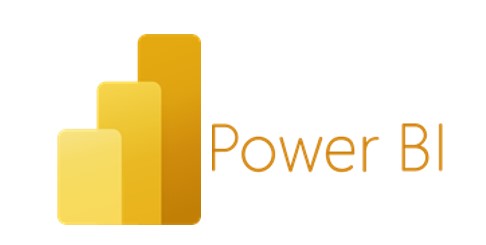
Power BI is the business intelligence application of the Microsoft 365 suite. It presents data consolidation and analysis in visually meaningful graphs, diagrams and KPIs. Power BI Dashboards can be embedded in SharePoint pages and Power Apps screens.

Microsoft Power Automate (previously called Microsoft Flow) is a ‘trigger and action’ workflow tool, which enables processes to be automated. It works on the concept of ITTT (If This, Then That) and has hundreds of connectors including many non-Microsoft external tools like Mailchimp, LinkedIn and Jotforms. Power Automate will likely be leveraged whenever we use the word “workflow” to connect aspects of the solution together, making changes and sending notifications based on events such as a new form completed, a new document uploaded or trigger dates reached.
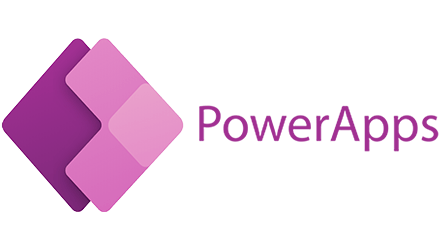
Power Apps is a visual interface tool that transforms complex processes over the top of databases and other data sources, to improve usability. Microsoft Power Apps provides ‘drag and drop’ low-code designer applications for phone, tablets, and browsers, enabling us to develop a series of screens and displays to consolidate and visualize any number of processes.
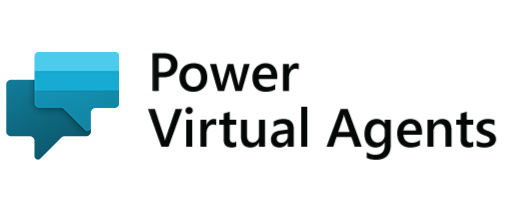
Power Virtual Agents is a drag and drop easily configurable tool leveraging human language and artificial intelligence to grant any organization the power of chat bots. You can easily list questions and answers, that the in-built AI automatically adapts context variations based on user-input wording.
FAQs
As the primary efficiency driver, and one of the under-used gems of the 365 product stack, the dashboards, automations, mobile apps and chatbots save your team members real time, making previously time-consuming tasks fast and easy. The figures quickly add up for 20 staff saving 2 hours each a week. That equals 2,080 hours annually; equivalent to having a whole extra full-time staff member. Examples of this time saving include copying text between systems, eliminating human error, sending reminders, and having information at your fingertips instead of searching for it.
The Business and Enterprise plans of Microsoft 365 include the basic level of the Power Platform. But if want to connect to external premium connectors (identified with little diamond icons), or use premium functionality, you’ll need to purchase a license for the application individually. Each of the 4 Power Platform tools have their own premium licensing models, so ask us if you could use some guidance on licence requirements.
Yes. Any user who will benefit from the premium connector must be licensed. For example, if you used just one premium subscription to retrieve premium data from an external data source, then save it into a free accessible location like SharePoint for all other users to connect to with free licenses, this is called multiplexing and is a breach of Microsoft’s licensing agreement. You only pay for licences for users accessing the tools each calendar month, and if you want help understanding the licence requirements, reach out with an email, phone call or book a time to talk with us.
Although each tool has its own licensing models, they are often so closely aligned that buying premium Power Apps or Power Virtual Agent also grants you premium Power Automate connectors and functionality, within the context of the original tool. For example, if you want a mobile phone app that updates your CRM and Mailchimp, you don’t need to buy premium Power Apps AND premium Power Automate, because you can use the Mailchimp workflow connectors in the context of the canvas app. Similarly, if you have a public chatbot that queries your internal data sources for answers, you can use any sayings or triggers within the chatbot learnings to trigger premium Power Automate workflows, without buying additional licenses. Get in touch and we can walk you through it.
The free license of Power BI provide full functionality, including connecting to any data source and building complex reports in Power BI desktop. The Power BI Pro license, which is the first level of premium subscriptions, allows you to securely publish and embed your report to the rest of your organization. Any user who wants to view the shared dashboard report will need a Power BI Pro license. Using the free license, you could just save and communally open the desktop file, however there is a risk that less experienced users could open and upset the calculations or design of the dashboard. There are also enterprise-level Power BI plans that allow for consumption-based billing, and public website hosting; reach out and we can guide you through the licence requirements based on your specific use case.
The premium plans for both Power Apps and Power Automate offer a ‘per user’ plan that allows ‘all you can eat’ premium apps or flows per individually assigned users. However, if your organisation has a lot of users leveraging just a couple of premiums apps or workflows, it can be more cost-effective to license the individual apps or workflows, instead of each user accessing them. It becomes a numbers games to determine which is better for your situation, as the per app/flow options start to become economical at around a dozen users per app/workflow.
PVA is licensed per Microsoft environment (tenant). It can unfortunately be cost-prohibitive for small organizations. Charged according to the unit of billed sessions, the more your users interact with the bot, the higher the monthly costs incurred. You can put caps on usage, for example have a public-facing chatbot on your website, and once it has interacted with 1,000 people each month, it disables itself to cap your monthly charge, and not appearing to subsequent website viewers. This may not be an ideal experience for your customers, of course, so it’s worth spending time working out how best to deploy this tool with unintentional negative impacts, and we are here to help.
Yes. ‘Power Virtual Agents for Teams’ is included with Office 365 licenses, and allows unlimited monthly chatbot sessions when used within your internal Teams. Note that it only includes standard connectors (i.e. pulling answers from SharePoint and non-premium sources).
Yes. Microsoft offers free Developer plans to learn and build skills on Power Apps, Power Automate and Dataverse. Click here to get started.
Best practice is that yes, you do have separate environments. However, multiple environments require the premium pricing. Ideally you should have four or more structured environments, as follows: 1. A sandbox for citizen-IT idea generation; 2. A development area that only service accounts can access to build out and standardize apps from sandbox into templated company-support apps; 3. UAT testing environment where developed apps are released prior to go-live, where stakeholders can test and provide feedback; and 4. A production environment all staff access as user to interact with your official supported apps and workflows. Each environment would have different rules and restrictions about who is allowed to create and publish apps and workflows within each.
Yes. Dynamics 365 is closely related to the Power Platform, all build on Microsoft’s Dataverse, leveraging the same tables, columns and design elements. If you’re leveraging Dynamics 365 for CRM, Marketing, Tickets, Field Services, ERP or more, your data is easily accessible within all of the Power Platform tools. It is common practice to build small individual Power Apps accessing specific elements of your wider Dynamics solutions. For example, a survey or checklist Power Apps canvas phone app can write directly into the Dynamics tables, or a ‘My follow ups’ view of your CRM can be a quick, easy interactive daily check list for your sales team on the go.
Microsoft’s Dataverse. previously called Common Data Service (CDS), is the database supporting Dynamics and the Power Platform. It is not directly accessible to end users like a SharePoint list, but includes rich security and manipulation possibilities, reminiscent of a hosted and configuration- based SQL server. It is mainly used for creating tables, columns, lookups, calculations and views are all possible for use across your Power Platform.
Microsoft Learn has some incredible resources available on the Power Platform here: https://docs.microsoft.com/en-us/learn/powerplatform/
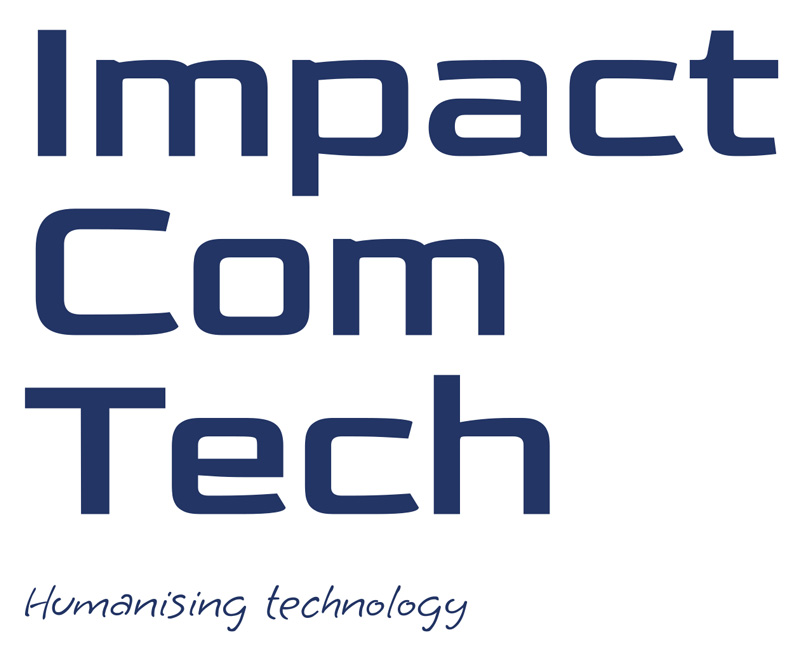

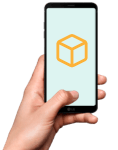





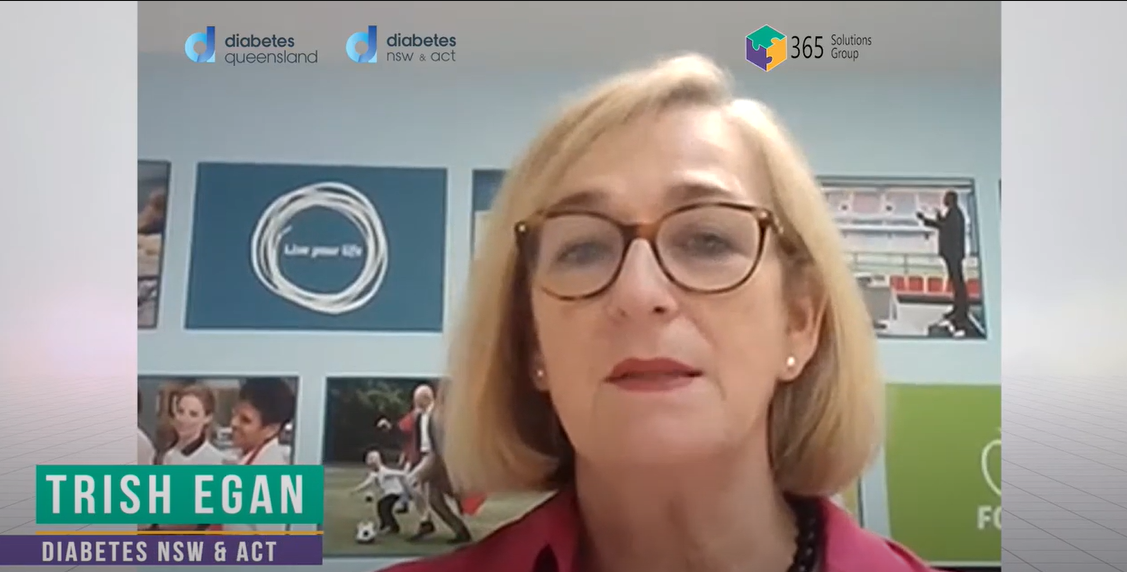








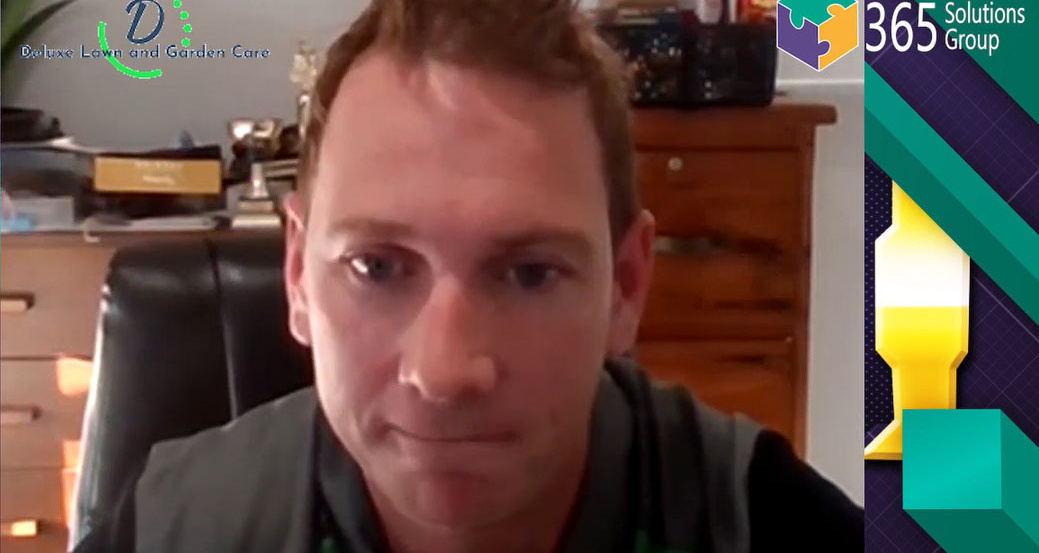


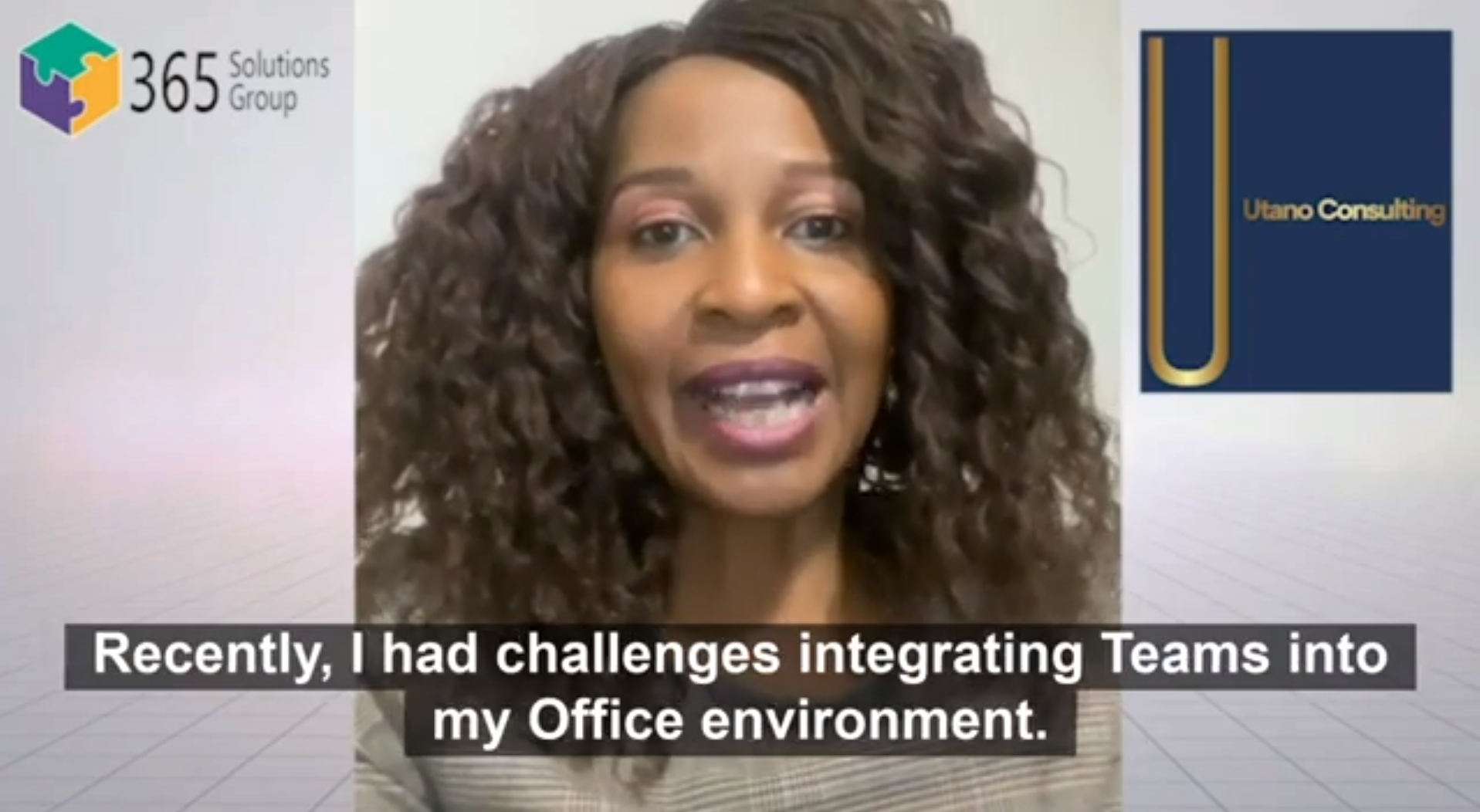




















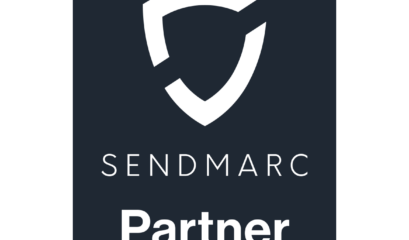


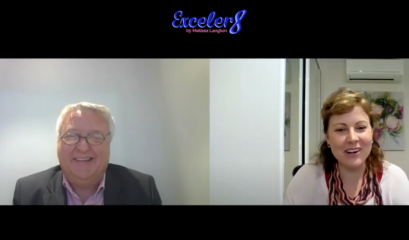

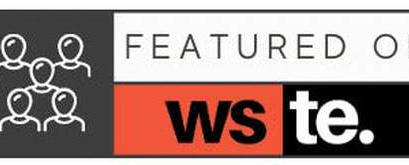
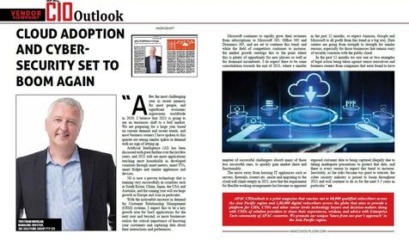
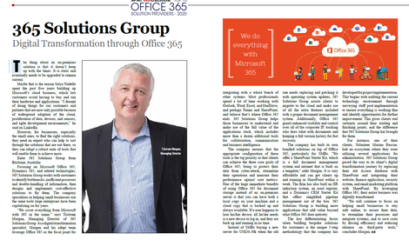

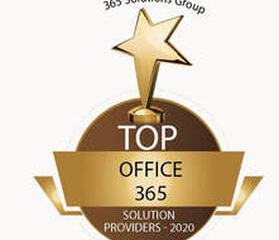
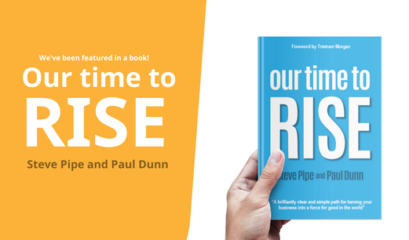
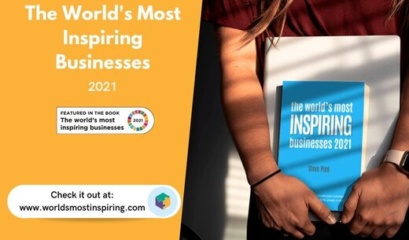



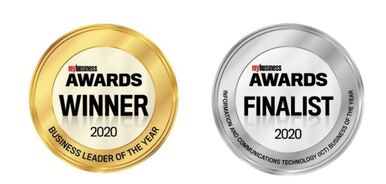
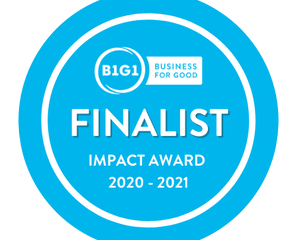

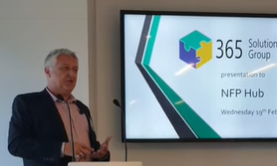

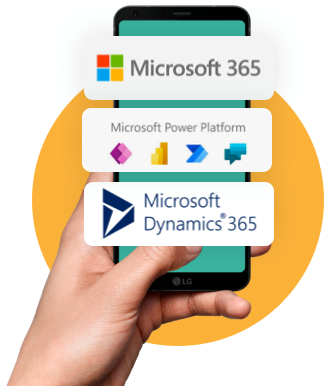


 1300 228 744
1300 228 744